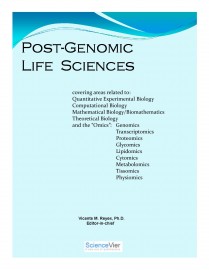
Volume 1, Number 3
CHARACTERIZATION OF THE BLOWFLY MAGGOT AN01
ABSTRACT:
Maggots of the blowfly have been used for the treatment of antibiotics resistant wounds. The total protein concentration, isolation and characterization of biologically active proteins and peptides from Maggot saliva were determined by Bradford and SDS-PAGE gel electrophoresis. The total protein concentration was 430.51 mg/ml. SDS-PAGE gel electrophoresis of Maggot Excretion/Secretion revealed the presence of 5 proteins and peptides ranging from 17KDa to 121KDa. These results are obtained side by side with a proteins and peptides standard reference. The bands of proteins isolated were Beta galactosidase 121 KDa, Glycosylated bovin serum albumin 93 KDa, Ovalbumin 40KDa, Cardonic anhydrase 36 KDa, Beta lactoglobin 23 KDa and Lysozyme 17KDa.
RELATIVE ABUNDANCE AND ANTIMICROBIAL ACTIVITIES
ABSTRACT:
Maggots have long been used as a traditional way of cleansing and healing gangrenous wounds. Blowflies’ abundance and antibacterial activities were determined using baited traps and agar cup plate technique. The family calliphoridae was the most abundant in all the sites sampled. The total of 5755 calliphorid flies captured belonged to two genera, Lucinia robineau (81.49%) and Chrysomya megacephala (18.51%). There was a significant difference in their abundance and a positive correlation between abundance and the two species with relative humidity and rainfall and a negative correlation with temperature. The isolates from infected wounds and whitlows were Pseudomonas earoginosa, Staphylococus aureus, Klebsiella pneumoniae and Staphylococcus epidermidis. Antibacterial susceptibility screening showed that, the maggot saliva/excretion was able to inhibit the growth. The zones of inhibition recorded was Pseudomonas aeruginosa was 24mm while Ampiclox (control) 37mm; Staphylococcus aureus was 20mm while Ampiclox (control) 31mm; Klebsiella pneumoniae was 27mm while Ampiclox (control) 39mm and Staphyloccocus epidermidis was 24mm while Ampiclox (control) 28mm. The result of the antibacterial susceptibility screening also revealed that, the greatest effect of the maggot saliva/excretion was obtained against K. pneumoniae while the lowest was obtained against S. aureus. Minimum Inhibitory Concentration (MIC) was between 40mg/ml and 60mg/ml while Minimum Bactericidal Concentration (MBC) screening showed that Pseudomonas earoginosa, Staphylococus aureus, Klebsiella pneumoniae, Staphyloccocus epidermidis have the same bactericidal concentrations of 60mg/ml each while Ampiclox (control) had 40mg/ml.
MATHEMATICAL EXPRESSIONS OF ENTROPY GENERATION AN03
ABSTRACT:
The investigations are performed on thermodynamic second law on steady flow of an incompressible variable viscosity electrically conducting fluid in a channel with permeable walls using convective surface boundary conditions. The non-linear differential equations are solved analytically. Homotopy analysis method is used to determine the analytical expressions of dimensionless fluid velocity and dimensionless temperature profiles. We also derived the analytical expressions of the entropy generation rate and Bejan number. The graphical representations of temperature, velocity, entropy generation rate, Bejan number are also presented and discussed quantitatively. The Homotopy analysis method contains the convergence control parameter so it can be extended to solve the strongly non-linear boundary value problem in other MHD flow problem. The flow systems were controlled by the regulated values of thermophysical parameters. This method can be easily extended to solve the other non-linear initial and boundary value problems in physical, chemical and biological sciences
IMPROVED UPPER BOUND ON THE NUMBER AN04
ABSTRACT:
Given a simple graph on n vertices, currently 1.7159n is the best upper bound on the number of minimal dominating sets. This bound has been improved for some classes of graphs. In this article, the bound 1.7159n is improved for the class of simple loop-free connected graphs having pendant vertices, leading up to the corresponding results for simple loop-free connected hypergraphs.





